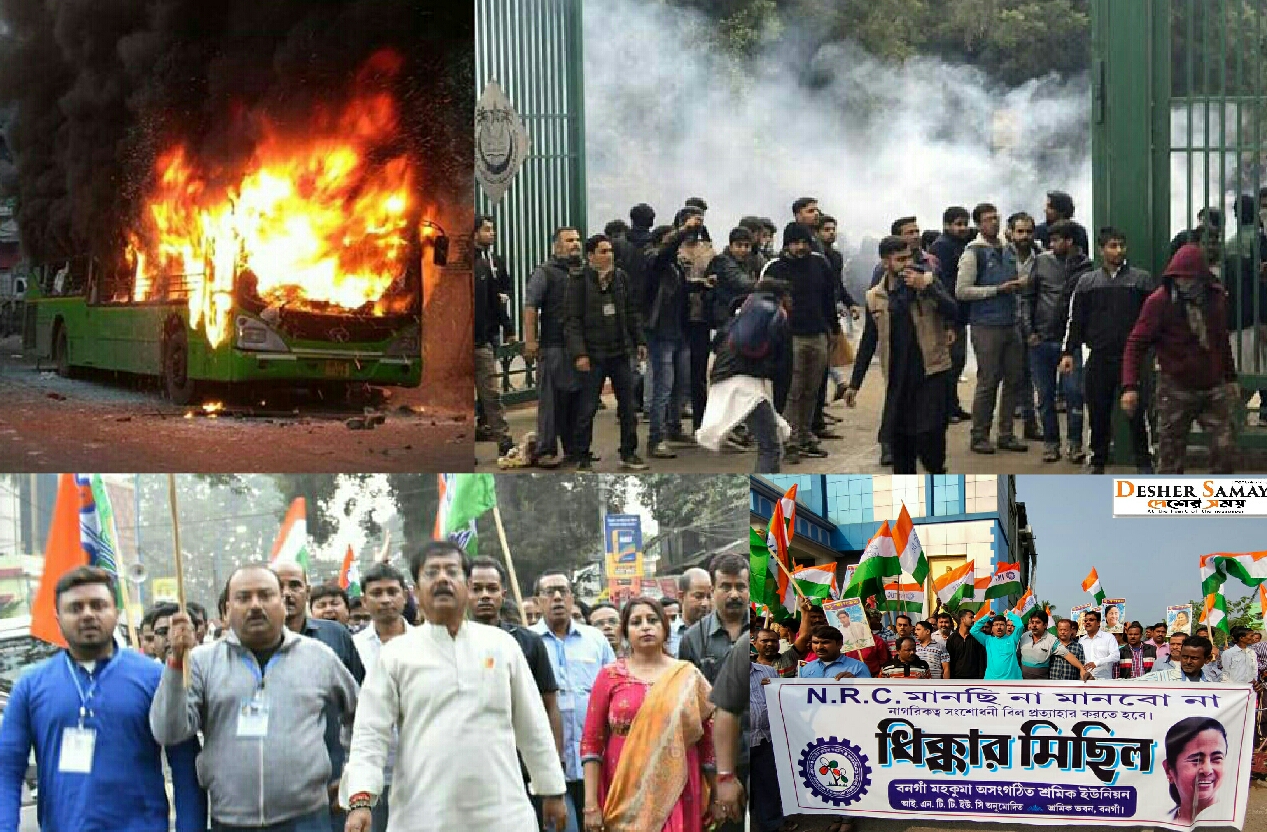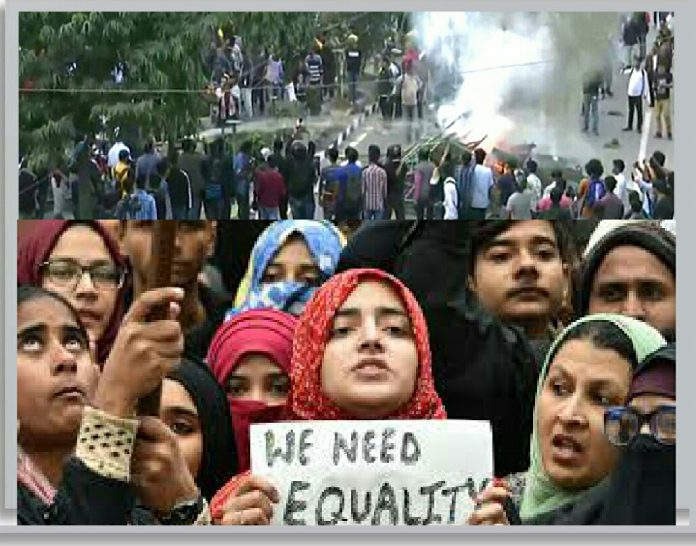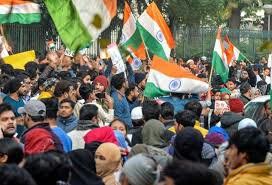
By our special correspondent

Five persons were injured when crude bombs were hurled at a protest march taken out against the Citizenship (Amendment) Act, 2019 in North Dinajpur district, a police officer said.The agitators had blocked NH 34 for two hours against the incident.
The State had witnessed violence and arson from December 13 to 17 during protests against the Citizenship (Amendment) Act, 2019More than 350 people have been arrested for their alleged involvement in the violence.
West Bengal Chief Minister Mamata Banerjee, who has been at the forefront in opposing the new citizenship law and the NRC, is on Thursday scheduled to conduct a protest rally in Esplanade area in the heart of Kolkata.

She had taken out three protest marches in Kolkata and Howrah from December 16 to 18.The Left parties are also scheduled to hold a protest march against the new citizenship law from Ramlila Maidan to Lady Brabourne College in the city.Intellectuals are slated to take out another protest march from Ramlila Maidan to Hogg market.
Protest against the contentious Citizenship Amendment Act outside Uttar Pradesh Bhawan in Chanakyapuri here, officials said.The protesters were taken to the Mandir Marg police station, they said.
The students had gathered outside Uttar Pradesh Bhawan with banners which read “No CAA, No NRC” and “Save Constitution”.The students said that they are from Aligarh Muslim University in Uttar Pradesh, the police said.Security had been beefed up outside Uttar Pradesh Bhawan in anticipation of the protest, they said.
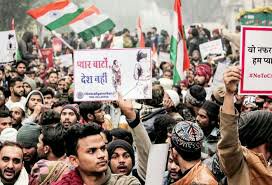
It was only last week that Parliament passed the communal Citizenship (Amendment) Bill and the President quickly gave his assent, making it law.Since then, mass protests have engulfed the country, starting with the North-East (Assam, Tripura and Meghalaya), spreading to West Bengal, Karnataka, Tamil Nadu, Uttar Pradesh, Bihar, Maharashtra and even Delhi. At the time of writing, protests are continuing and gathering steam.
The RSS contribution to the Narendra Modi-led BJP government is not merely in terms of the number of its karyakartas (activists) or pracharaks (seniors) that today sit as ministers, governors, elected members etc. These numbers are, of course, staggering. But what matters is that the RSS is pushing its agenda in the guise of a popularly elected government.
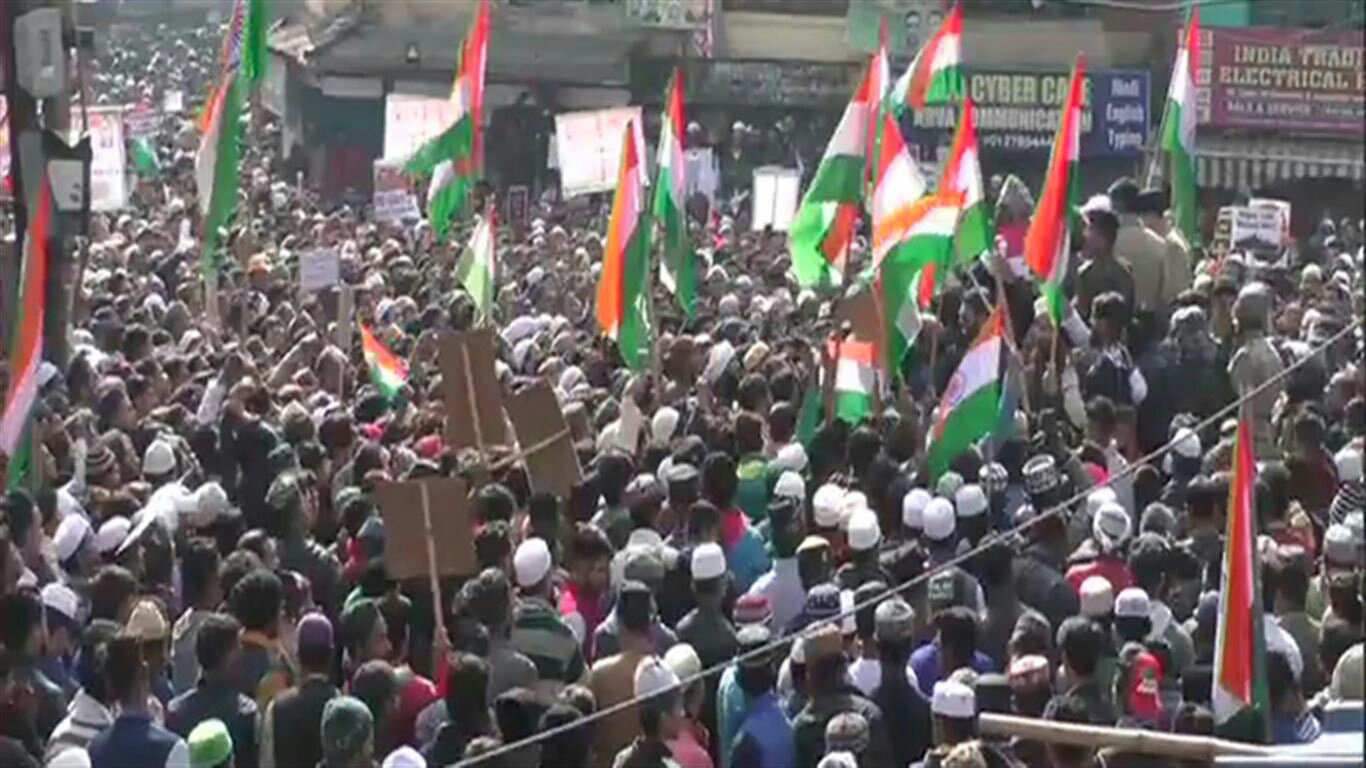
This is especially true for the current second term of Modi, which is backed by a solid majority of BJP in the Lok Sabha. They seem to have concluded that all the dreams that RSS has fostered for decades on the sidelines of the Indian mainstream, can now be rammed through by executive action.
